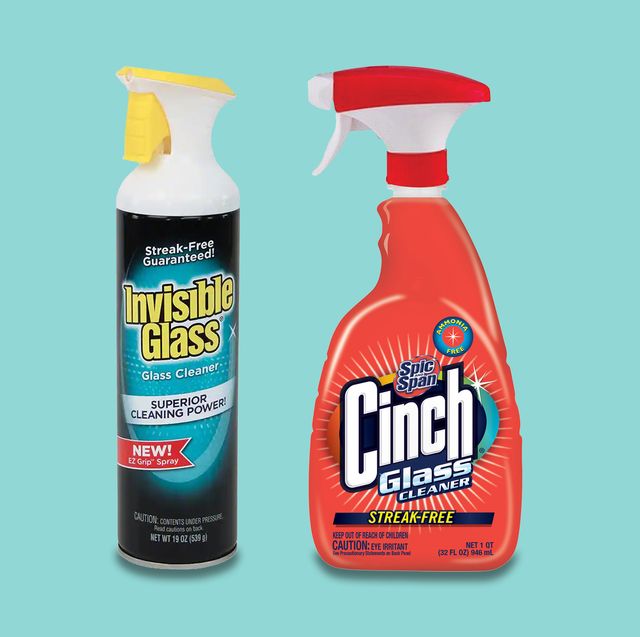
This story was updated in October 2022 to add new picks, based on testing by the Good Housekeeping Institute Home Care and Cleaning Lab. We also added information about how we test and answered frequently asked questions on window and glass cleaners.
While you might not even notice a little spot on your carpet or fingerprints on a wall, a smudged, splattered, filmy glass surface, mirror or window can be very obvious and bothersome. A good glass cleaner is a must-have in any cleaning arsenal and it should be one that cuts grime quickly and is easy and neat to use. To find out which glass and window cleaners are best and to produce helpful window cleaning advice and tips, like the common mistakes to avoid when cleaning your windows, our Good Housekeeping Institute’s Home Care and Cleaning Lab experts evaluate multiple brands every year both in the Lab and at home.
In the Lab, we apply the cleaners to black glass panels that we’ve smeared with greasy fingerprints, lipstick marks, household dust and other everyday stains (think the toothpaste that you accidentally squirted on your bathroom mirror). We time how quickly each glass cleaner works, count how many passes it takes to completely clean the glass and — after a maximum number of passes — assess how much residue and streaking is left behind. We use black glass because it makes telltale streaks and smudges easier to see. In our last battery of tests, we wiped more than 300 strokes! Here are our top performing window and glass cleaners for 2022.
Our top picks:
Scroll down to find out more about each of the product recommendations, plus you’ll discover more details about how we test window and glass cleaners and what to look for when shopping for one. Looking for more cleaning content? Check out our guides to the best glass screen cleaners and the best stovetop cleaners, glass and otherwise.
Advertisement – Continue Reading Below
Advertisement – Continue Reading Below


 Ingredients: Think about what you plan to clean. If ammonia or vinegar are in the ingredients list, keep in mind that you won’t be able to use the product on tinted glass surfaces or granite countertops. If you’re sensitive to scents, consider purchasing a product that doesn’t contain added fragrance.
Ingredients: Think about what you plan to clean. If ammonia or vinegar are in the ingredients list, keep in mind that you won’t be able to use the product on tinted glass surfaces or granite countertops. If you’re sensitive to scents, consider purchasing a product that doesn’t contain added fragrance.